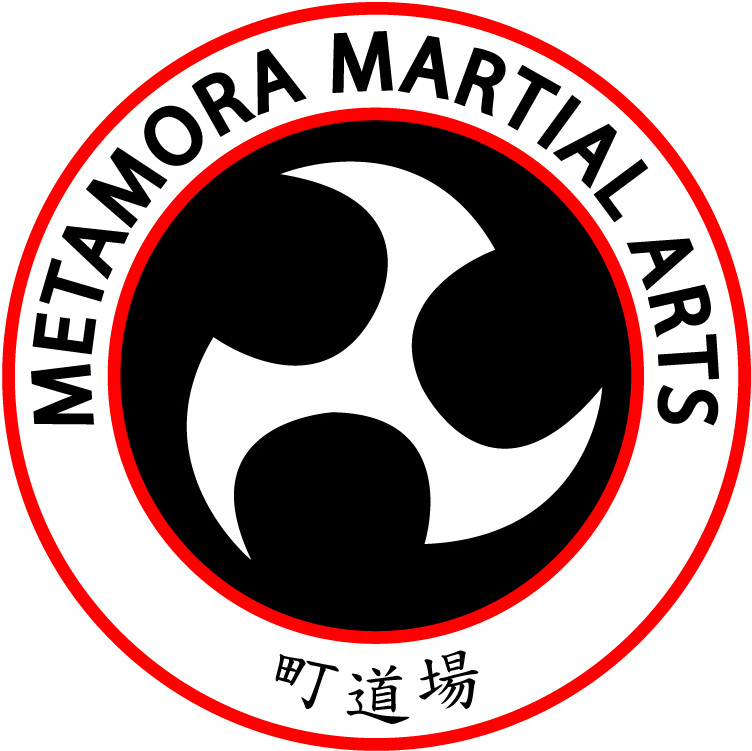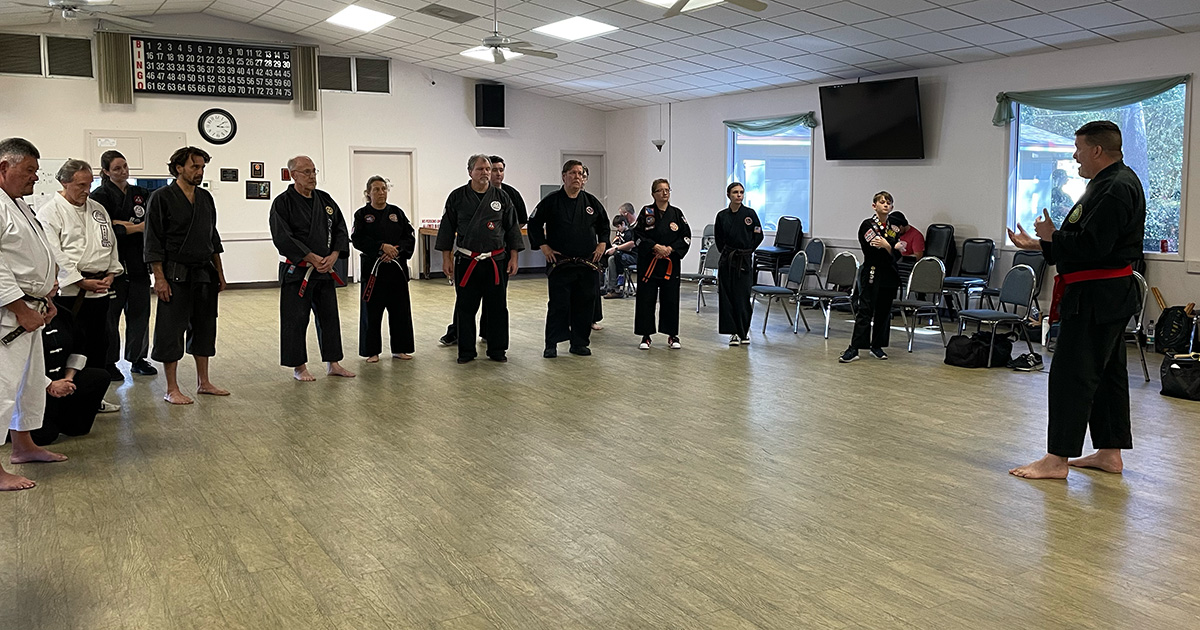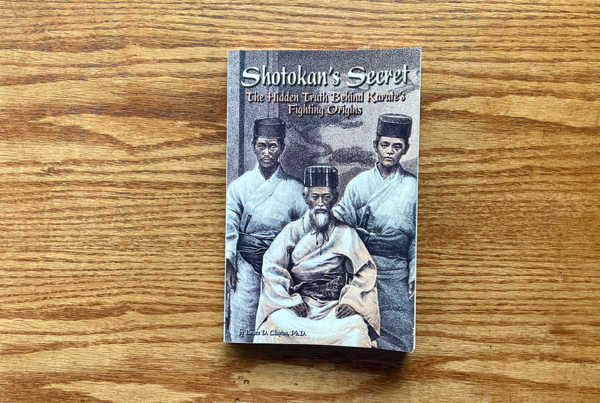This past weekend, on Saturday, Feb. 24, Mr. James Webster hosted a fantastic seminar for approximately 40 attendees in Ridge Manor, Florida.
Most of the martial artists in attendance were from Florida, but I was proud to represent the Illinois contingent. Folks also represented Georgia and Pennsylvania.
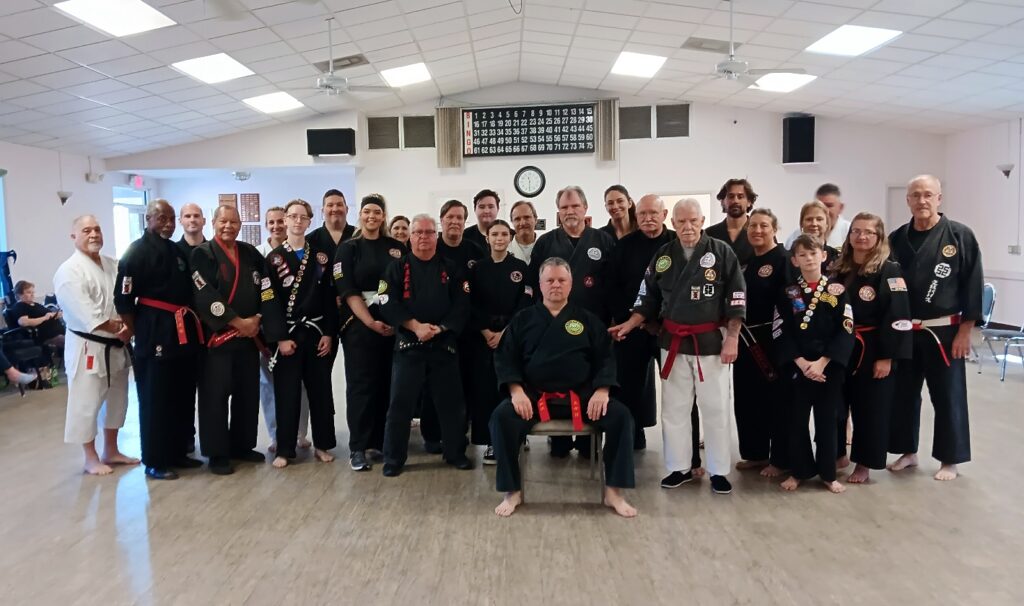
Everybody will pick up different things from a martial arts seminar.
My biggest takeaway… How can we best protect ourselves in a less-than-ideal situation?
I picked up some tips here that I’d like to share according to how I interpreted them.
Instructors or other attendees: If you feel I’ve misconstrued what you or another instructor was trying to get across, please let me know so I can make a correction.
Hanshi Matt Molineux: Anaku Bunkai
Mr. Molineux began the seminar by setting the foundation.
He explained that our style, shinmei Shorin-ryu karate, was developed to mean true-life or real-life application of karate.
In other words, we must be able to apply the techniques from our forms in a real-life encounter.
He further set the foundation by talking about principles of movement, including tai sabaki, which means to change your body or reposition yourself.
Through the lens of the Anaku kata, he showed a variety of ways in which the bunkai (analysis) of Anaku demonstrates tai sabaki.
He wants to move quickly behind an attacker to reduce the amount of options that person has to use, preferring to move at the rear angle as opposed to directly behind them. This reduces the likelihood that an attacker can use one side, so he’s only got to deal with the side he’s closest to.
Hanshi James Webster: Yara Guwa No Tonfa
Mr. Webster then taught our group one of his favorite tonfa forms, Yara Guwa No Tonfa, apparently developed by the son of the legendary karate master, Chatan Yara.
As a kobudo aficionado, Mr. Webster’s mission has been to spread the art of weapons within Okinawan martial arts.
Associations or styles can rank kobudo separately from empty-hand martial arts—you can be a black belt in karate but a yellow belt in kobudo, for example.
Mr. Webster said he’d learned this tonfa kata decades ago and fell in love with it immediately.
He has seven tonfa forms in his weapons manual that includes 33 kobudo forms.
Finally, Mr. Webster finished up his segment by performing his kama bo kata to show everyone more possibilities with weapons.
Si Tai Gung Steve Aldus and Si Gun Kim Aldus: Tai Chi Chuan, Hsing-i Chuan, Baguazhang Applications
Next, Mr. and Mrs. Aldus expanded on Mr. Molineux’s presentation by explaining how the Chinese martial arts also have methods of putting you in a better position than your opponent.
Mr. Aldus introduced bagua stepping to the group, an alternative to the methods Mr. Molineux used to get behind a person.
He and Mrs. Aldus mixed segments from…
- The Hsing-i chuan elements of fire, wood, and water
- The Hsing-i chuan animals of horse and water strider
- The tai chi chuan postures of “white crane spreads its wings” and “play lute”
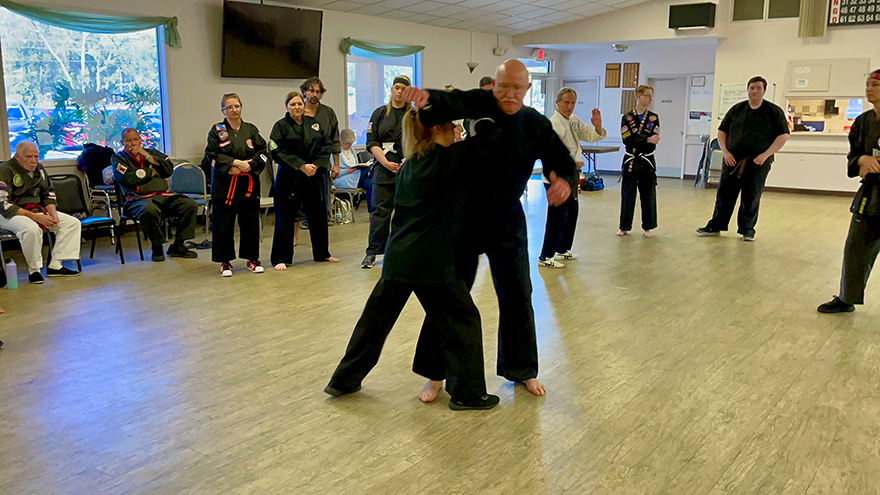
In the end, both methods (karate or bagua) put you as a defender in a better position than the person trying to harm you.
Because Chinese martial arts influenced the development of Okinawan martial arts, nearly all of the instructors at this event attempted to demonstrate that no matter your background and experience, the masters of old put many of these elements into our forms.
Hanshi James Gifford: Read, Range, Reaction
As the last presenter, Sensei Gifford introduced anchoring points to help us better understand the concepts introduced by the previous instructors.
- Read – What’s happening around you?
- Range – How close are you to danger?
- Reaction – What’s going to happen if you do a certain technique? What are the pros and cons of doing that?
His premise centered on what’s trending with people today: boxing, mixed martial arts (MMA), and wrestling.
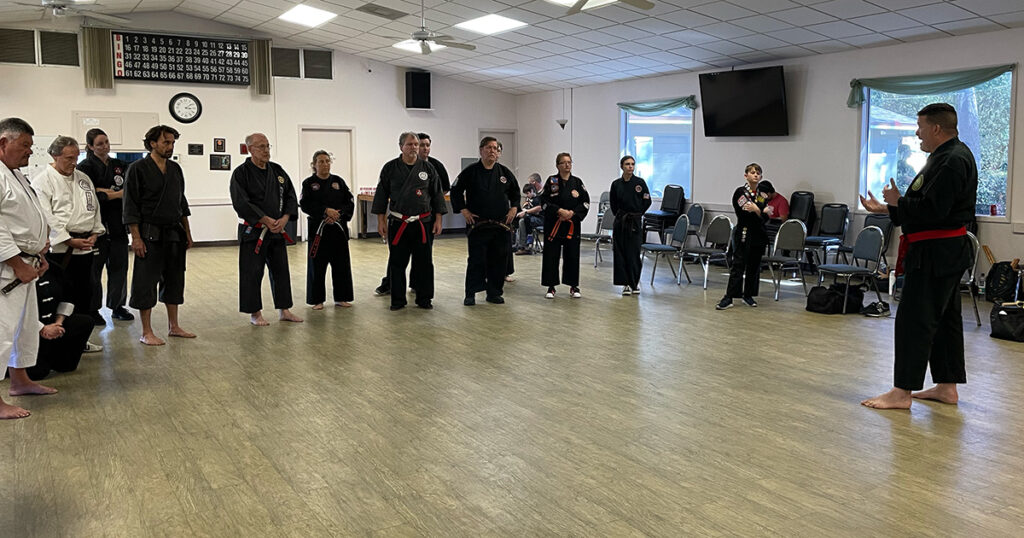
He believes we need to be able to defend against a boxing-style jab, but a jab is hard to spot until it’s too late.
He showed us various ways we could use the shuto to protect ourselves from a jab. He picked the shuto because of its complements in various martial arts, from a typical karate-style shuto to santi (“three essentials”) position in Hsing-i chuan to “play lute” in tai chi chuan.
Using the shuto, he showed us several ways we could deal with the left jab in a conventional fighting stance (both people with their right leg back, left leg forward):
- Simply step out and block with the left shuto.
- Step out and parry their left jeb with the rear (right) hand and lay the forearm into the person.
- Finally, assuming they’ll pull the jab back, hang on to their retracting arm and follow them in with a forearm, followed by a leg sweep if it’s there.
Mr. Molineux kindly reminded me that option 3 above is in our brown belt ippons (#6).
Mr. Gifford also demonstrated a hollow fist:
- From an open hand, form a small cave in the middle as if you were holding a quarter in your palm.
- Then, close your fist like normal.
- Punch while maintaining your hollow hand.
The hollow fist—as I’ve experienced from both Mr. Aldus and now Mr. Gifford—is a much more devastating strike than a regular fist.
Final Thoughts
Overall, I’m grateful to Mr. Webster for hosting and to the instructors who shared their knowledge and experiences with us.
Seminars can be long days, or long weekends, but I thought this event went quickly.
I appreciated how the instructors, seemingly unknowingly, built off one another as the day progressed.
Sometimes, it feels like martial arts instructors can conflict with each other, but this group even with their stylistic differences can still show how all of our styles and arts can work with each other.
This event was sanctioned by both the International Okinawan Budo-Kai and Martial Arts USA.
